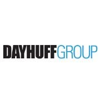Automation Implementation for Home Building Company
- Custom Software Development
- $50,000 to $199,999
- Mar. - May 2020
"They earned my trust and I really respect and appreciate the work that went into doing that."
- Real estate
- Columbus, Ohio
- 1,001-5,000 Employees
- Phone Interview
- Verified
A home building company hired The Dayhuff Group to automate processes. They fully automated the process of entering HUD data into their ERP system.
Because of The Dayhuff Group's excellent work, the process is automated and the firm's employees are free to pursue more worthwhile tasks. The trusted team at The Dayhuff Group is experienced, going above and beyond to find their client's challenges and leverage technology to alleviate their issues.

